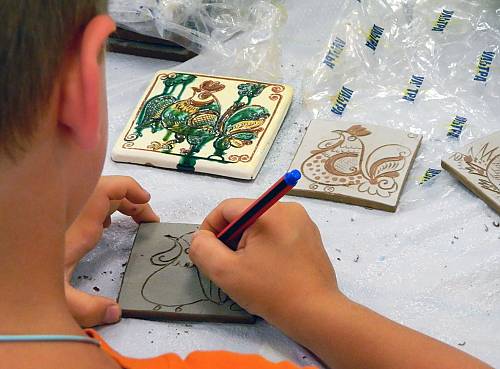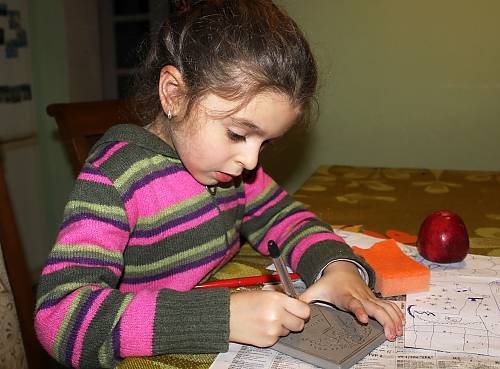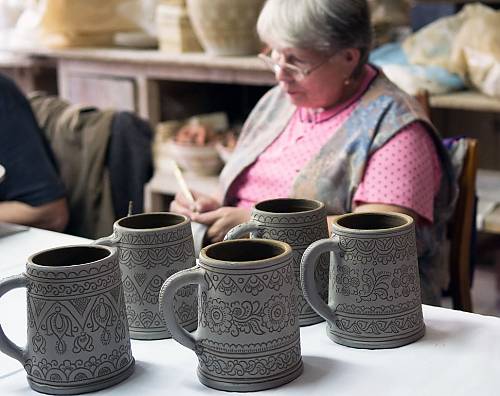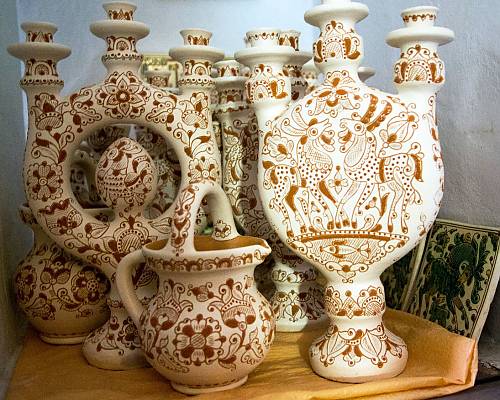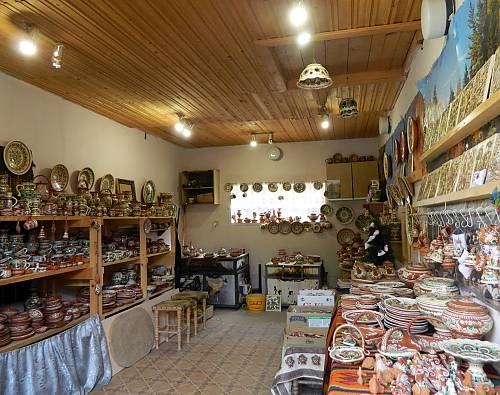Tradition of Kosiv painted ceramics
Inscribed in 2019 (14.COM) on the Representative List of the Intangible Cultural Heritage of Humanity

The tradition of Kosiv painted ceramics – which include dishes, ceremonial items, toys and tiles – arose in the 18th century, reaching its golden age in the mid-19th century. The products are made using local grey clay, watered with a white clay of creamy texture; when dried, they are painted using a metal stick scratching technique to form a graphical contour drawing. They are then fired and painted with metal oxides to produce the traditional green and yellow colors, an indispensable feature of the ceramics. Sometimes, masters add a little cobalt, but not so much as to lose the traditional colouring. During the firing, the green dye spreads to create the watercolour effect, usually called ‘tears’. The main feature of Kosiv ceramics is the figurative design of the ornament. The plot motif expresses the history, life, folklore, beliefs and customs of the Hutsuls, and surrounding flora and fauna. The ceramics are used in everyday life and have a practical and artistic value. Masters work in family workshops and small craft workshops and the practice constitutes an identity marker and sign of affiliation with the community. The Department of Art Ceramics of Kosiv College ensures the continuity of generations of masters and bearers and has a special responsibility for sustaining the tradition, preserving the traditional technological cycle (potter’s wheels, clay, tools and pottery kilns).

